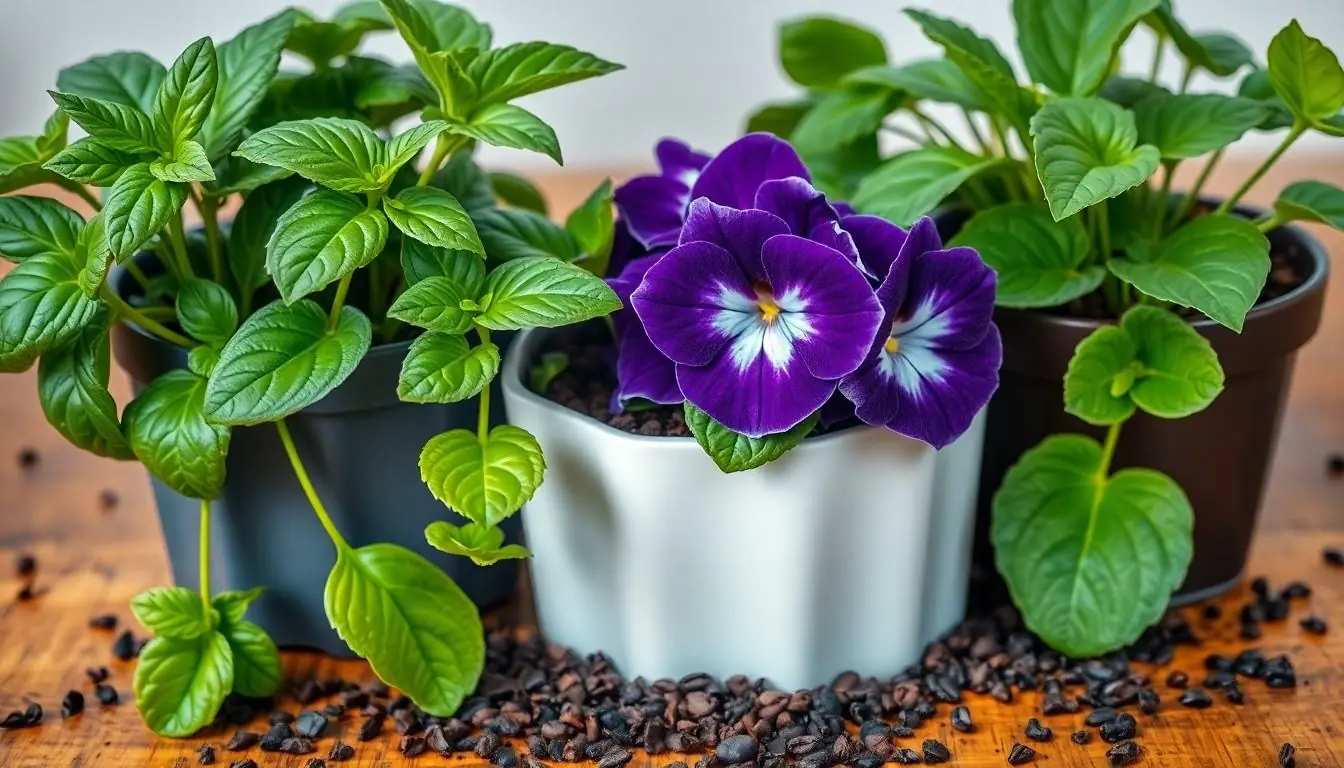Table of Contents
ToggleFor many, coffee is the morning ritual that kickstarts the day, but what if those used coffee grounds could also give houseplants a boost? Imagine turning your caffeine habit into a green thumb’s secret weapon. It’s like giving your plants a little espresso shot—without the jitters!
Understanding Coffee Grounds
Coffee grounds serve as a resourceful option for enhancing plant care. Their unique properties contribute significantly to plant health.
Nutritional Benefits for Plants
Coffee grounds contain nitrogen, potassium, and phosphorus, essential nutrients for plant growth. They foster improved soil structure and enhance drainage as they decompose. Organic matter in coffee grounds increases microbial activity, which benefits nutrient uptake. A fresh mix can also attract earthworms, further enriching the soil. Combining coffee grounds with compost creates a more potent fertilizer, feeding houseplants effectively.
Potential Risks Involved
Coffee grounds may lead to over-fertilization if used excessively, potentially harming plants. Acidity levels fluctuate based on brewing method, which can affect soil pH. Certain houseplants, particularly those preferring alkaline conditions, might suffer from ground application. Mold growth presents another concern when coffee grounds remain damp for too long. Monitoring moisture levels and usage frequency protects plants while reaping the benefits of coffee grounds.
How to Use Coffee Grounds with House Plants

Used coffee grounds can provide beneficial nutrients when applied correctly. Incorporating them into houseplants’ care routine enhances growth and overall health.
Best Practices for Application
- Add coffee grounds sparingly to avoid over-fertilization.
- Mix grounds thoroughly with potting soil to prevent clumping.
- Limit application to once a month for optimal results.
- Ensure grounds are dry before adding to soil to reduce mold risk.
- Monitor humidity and acidity levels regularly to protect sensitive plants.
Recommended Types of House Plants
- Potted herbs like basil and rosemary thrive with coffee grounds due to their nitrogen content.
- African violets benefit from the improved drainage and nutrient boost coffee grounds provide.
- Peace lilies show positive responses, especially with the added moisture retention from the organic matter.
- Ferns appreciate the slightly acidic conditions created by coffee grounds, which supports their growth.
- Vegetable plants like tomatoes and peppers grow healthier when enriched with coffee grounds for nutrient enhancement.
Alternatives to Coffee Grounds
There are several effective alternatives to coffee grounds for enriching houseplants.
Other Organic Fertilizers
Using compost provides a well-rounded nutrient source. Manure is another option, delivering high nitrogen levels. Worm castings contribute beneficial bacteria that enhance soil health. Bone meal supports strong root development with its phosphorus content. Seaweed extracts offer a rich supply of micronutrients, promoting overall plant vitality.
Comparison of Nutritional Value
Coffee grounds contain notable nutrients but aren’t the only option. Compost typically has a balanced nutrient profile, including nitrogen and organic matter. Manure, rich in nitrogen, can exceed coffee’s nitrogen levels. Bone meal features higher phosphorus than coffee, aiding root growth. Seaweed provides essential potassium and micronutrients, often lacking in coffee grounds.
Using coffee grounds for houseplants can be a beneficial practice when done correctly. Their rich nutrient profile can enhance plant growth and improve soil health. However, it’s crucial to approach this method with care. Monitoring moisture levels and acidity is essential to prevent potential issues like over-fertilization or mold growth.
By applying coffee grounds sparingly and combining them with other organic materials, plant enthusiasts can create a thriving environment for their green companions. For those looking to explore various options, alternatives like compost and manure can also provide excellent nutrients. Ultimately, understanding the needs of specific plants will lead to healthier and more vibrant houseplants.




